Types of Marketing Automation: Which is Right for You?

Marketing automation has revolutionized how businesses connect with their audience. At Drop Cowboy, we’ve seen firsthand how different types of marketing automation can transform customer engagement and drive growth.
From email campaigns to social media management and CRM systems, the options are vast and varied. In this post, we’ll explore the most effective types of marketing automation and help you determine which strategies align best with your business goals.
How Email Marketing Automation Boosts Your Business
Email marketing automation transforms how businesses communicate and engage with their audience. This powerful tool streamlines processes and amplifies results when used effectively.
Drip Campaigns and Lead Nurturing
Drip campaigns form the core of email marketing automation. These pre-written email sets go out automatically based on specific timelines or user actions. They excel at nurturing leads through the sales funnel. A software company might send a series of emails that introduce different product features over several weeks after a user signs up for a free trial.
A study by Epsilon reveals that automated email messages average 70.5% higher open rates and 152% higher click-through rates than traditional marketing messages. These statistics highlight the immense potential of well-crafted drip campaigns.
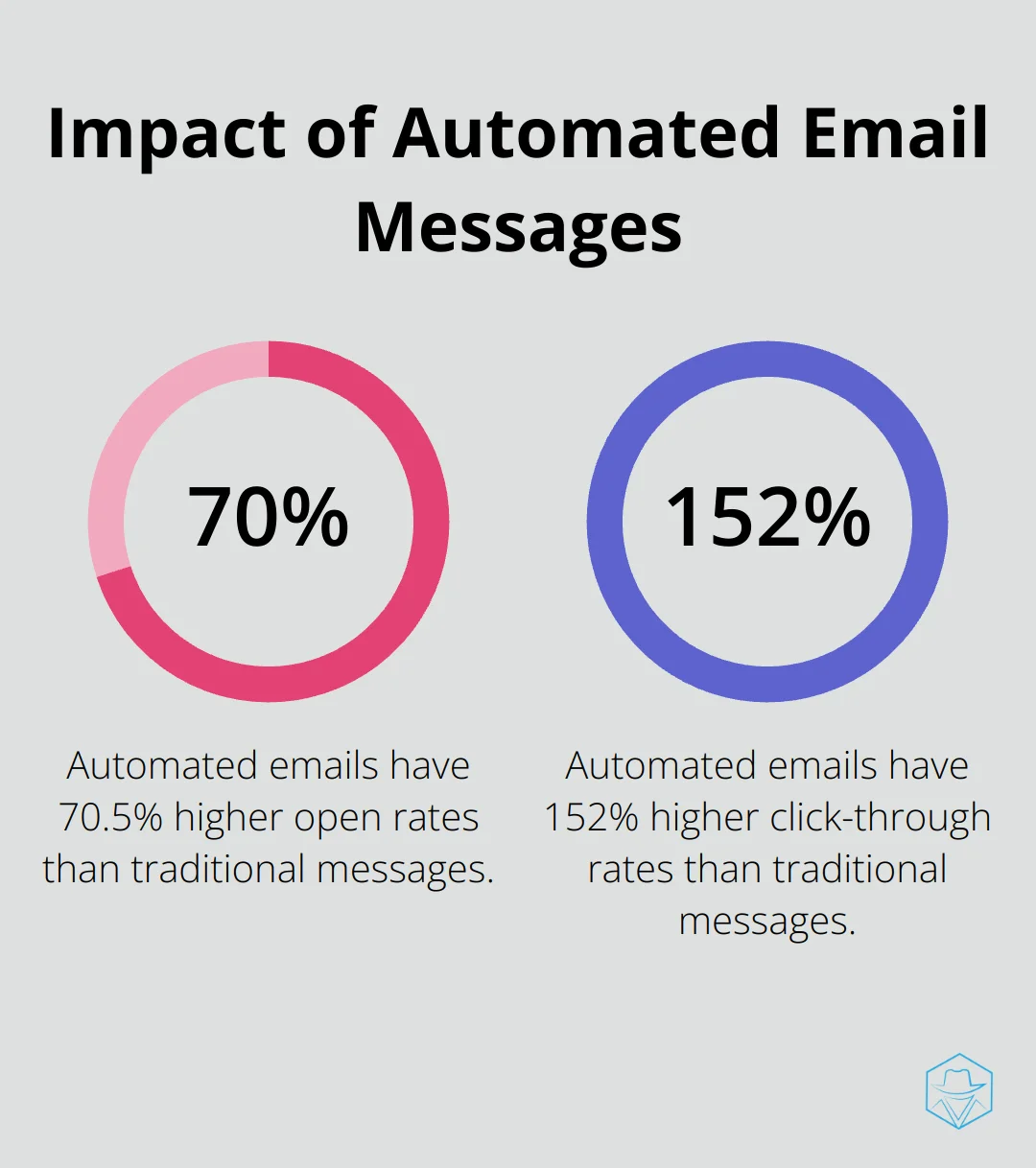
Behavioral Triggers and Personalization
Behavioral triggers elevate email automation to new heights. These emails automatically send based on specific actions a user takes (or doesn’t take). For example, if a customer abandons their shopping cart, an automated email reminder can potentially recover the sale.
Experian reports that transactional emails have 8x more opens and clicks than any other type of email, and can generate 6x more revenue. This data underscores the importance of timing and relevance in email marketing.
A/B Testing and Optimization
A/B testing plays a critical role in refining email marketing strategies. It involves sending two variations of an email to small subsets of your audience to determine which performs better before sending the winning version to the remainder of your list.
HubSpot found that A/B testing your email marketing can improve conversion rates by 49%. This improvement could mean the difference between a successful campaign and a flop.
Email marketing automation focuses on sending the right message to the right person at the right time. These techniques (when mastered) can significantly improve your email marketing ROI and foster stronger customer relationships.
As we move forward, it’s important to consider how email marketing automation integrates with other marketing channels. Social media marketing automation, for instance, complements email strategies by extending reach and engagement across multiple platforms.
How Social Media Automation Amplifies Your Marketing Reach
Social media automation has transformed how businesses maintain an engaging online presence. This powerful approach saves time and resources while maximizing impact on various platforms.
Schedule Posts for Consistent Engagement
Social media automation allows marketers to schedule posts across multiple platforms simultaneously. This feature enables content planning in advance, ensuring a steady stream of posts without constant manual updates. Sprout Social reports that businesses using scheduling tools experience a 36% increase in their social media engagement rates.
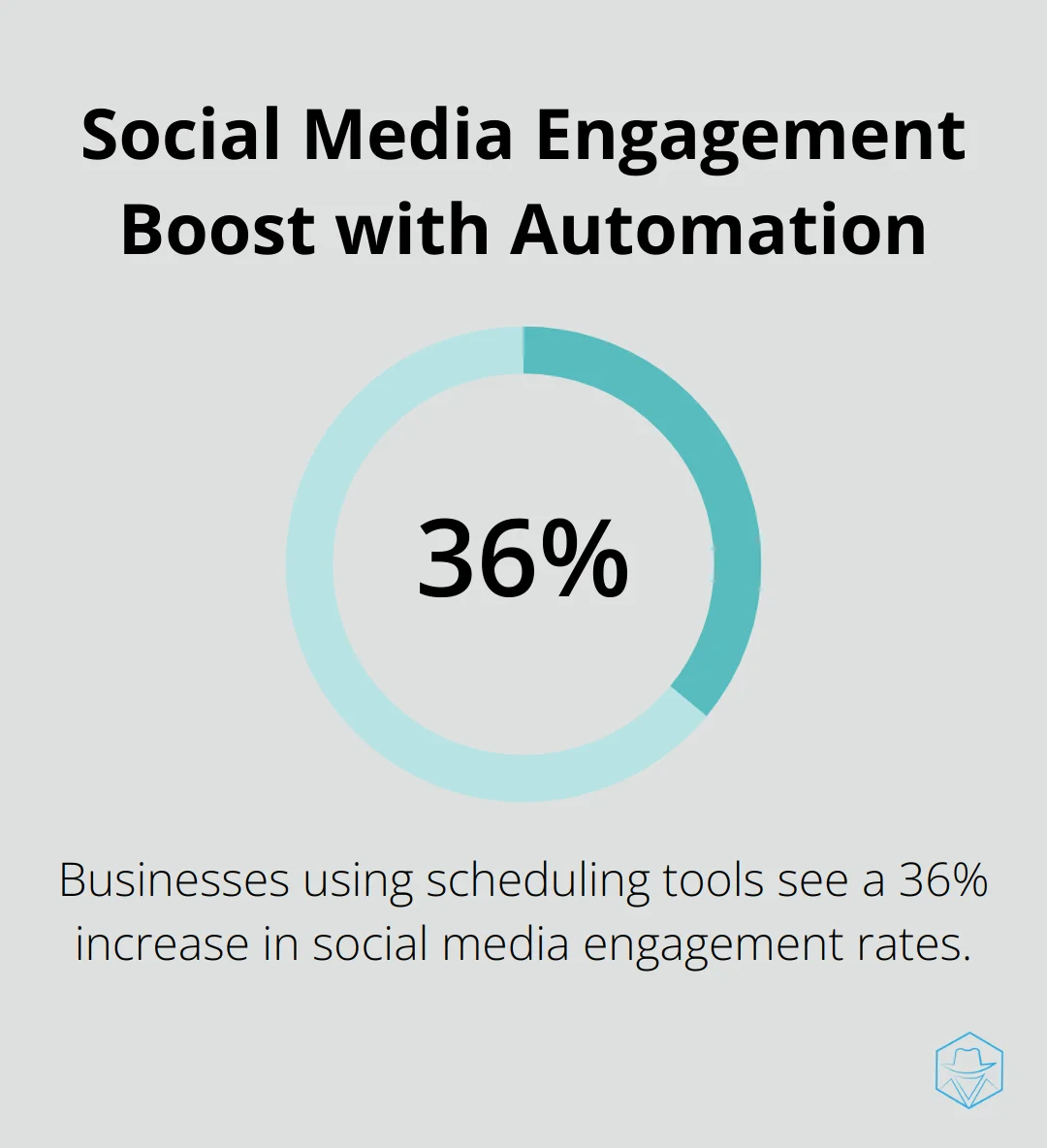
(It’s important to note that while scheduling tools excel at maintaining consistency, spontaneous posts can add authenticity and timeliness to your social media presence.)
Curate Content That Resonates with Your Audience
Automated content curation tools have revolutionized information sharing with audiences. These tools scan the internet for relevant articles, videos, and images based on predefined keywords and topics. This process keeps social media feeds fresh and informative without requiring hours of manual research.
BuzzSumo’s study found that curated content can generate up to 4 times more clicks than original content. This statistic underscores the importance of sharing a mix of original and curated content to keep your audience engaged and position your brand as an industry thought leader.
Enhance Engagement with AI-Powered Tools
AI-powered social listening and engagement automation tools have elevated social media marketing. These systems monitor brand mentions, industry trends, and competitor activities across social platforms. They automatically categorize and prioritize mentions, allowing businesses to respond promptly to critical comments or inquiries.
Gartner’s report indicates that companies using AI for customer service resolve issues 40% faster than those relying solely on human agents. This efficiency improves customer satisfaction and frees up valuable time for marketing teams to focus on strategy and creativity.
(While automation tools offer numerous benefits, maintaining a human touch in your social media interactions remains essential.)
As we transition to the next section, we’ll explore how Customer Relationship Management (CRM) automation integrates with social media efforts to create a cohesive marketing strategy. This integration allows businesses to leverage data from social interactions to enhance customer relationships and drive sales.
How CRM Automation Supercharges Your Sales Process
Customer Relationship Management (CRM) automation revolutionizes how businesses manage and analyze customer interactions throughout the customer lifecycle. This powerful tool streamlines sales processes and boosts revenue.
Lead Scoring Mastery
CRM automation excels at lead scoring, which assigns values to leads based on behavior, demographics, and engagement level. For instance, a lead who downloads a whitepaper and attends a webinar might receive a higher score than one who only visits your website once.
Gartner reports that companies which automate lead management experience a 10% increase in revenue within 6-9 months. (This statistic highlights the importance of implementing a robust lead scoring system.)
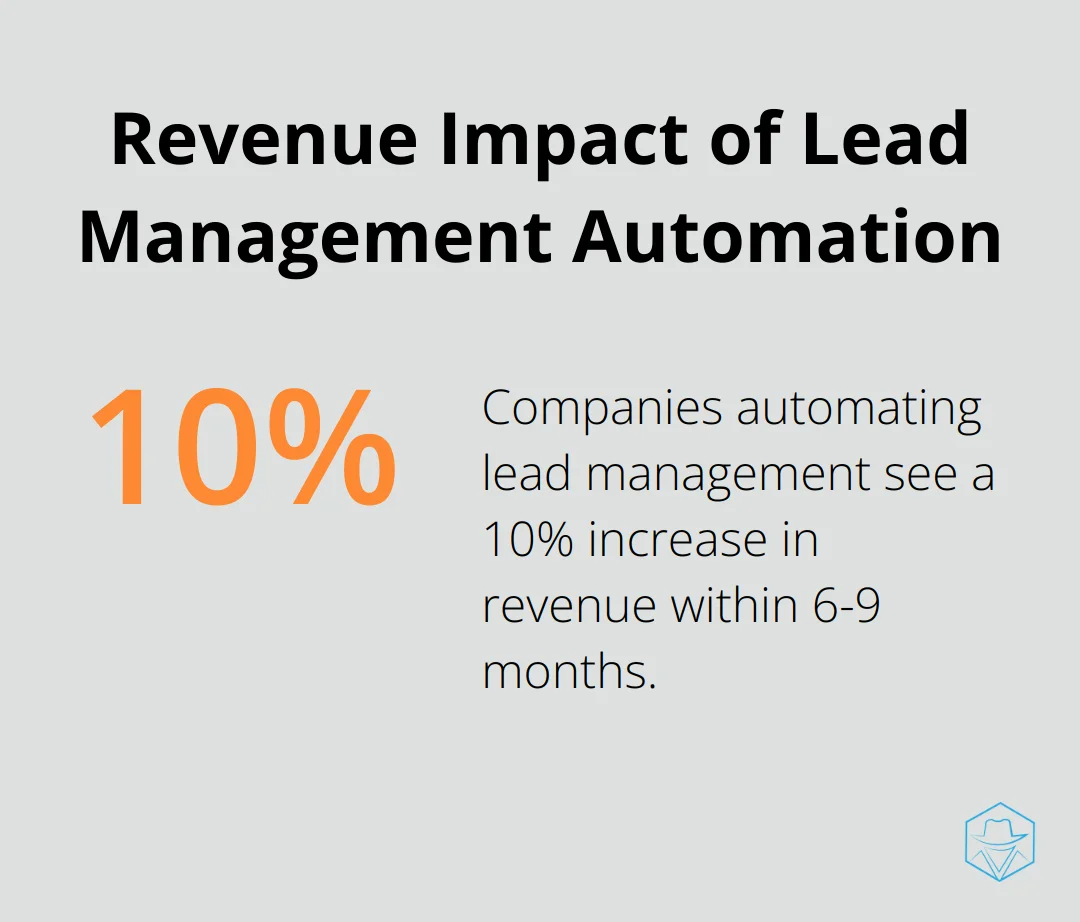
To implement lead scoring effectively, identify actions that typically indicate high-quality leads for your business, such as:
- Specific content downloads
- High-value page visits on your website
- Email engagement
- Event attendance
After establishing these criteria, work with your CRM to assign point values to each action. This approach helps sales teams prioritize efforts and focus on the most promising leads.
Sales Pipeline Optimization
CRM automation excels at managing your sales pipeline. It automates routine tasks and provides real-time visibility into deal progress, enabling your team to close more deals faster.
Nucleus Research found that sales representatives increased productivity by 14.6% when they used mobile CRM apps. (This productivity boost directly translates to more closed deals and higher revenue.)
To leverage CRM automation for pipeline management:
- Set up automatic reminders for follow-ups
- Use AI-powered insights to predict which deals will likely close
- Automate data entry to maintain an up-to-date pipeline without manual input
Precision Customer Targeting
CRM automation shines in customer segmentation. It automatically categorizes customers based on behavior, purchase history, and demographics, enabling highly targeted marketing campaigns.
Salesforce research shows that 52% of consumers will likely switch brands if a company doesn’t personalize communications. CRM automation makes this level of personalization possible at scale.
To harness customer segmentation power:
- Use CRM data to create detailed customer profiles
- Set up automated workflows that trigger personalized communications based on customer actions
- Analyze your segments regularly to identify new opportunities for targeted marketing automation
CRM automation creates a better experience for customers while driving business growth. These strategies will maximize the value of your CRM investment.
Final Thoughts
Marketing automation comes in various forms, each offering unique benefits for businesses. Email marketing automation excels in lead nurturing and personalization, while social media automation streamlines content distribution and engagement. CRM automation optimizes sales processes and enhances customer targeting. Companies should select the right types of marketing automation based on their specific goals, target audience, and available resources.
The future of marketing automation looks promising, with advancements in AI and machine learning set to deliver more sophisticated and personalized customer experiences. Businesses that embrace automation will adapt better to changing market dynamics and customer expectations. (Those who lag behind may find themselves at a competitive disadvantage.)
At Drop Cowboy, we understand the power of automation in modern marketing strategies. Our platform combines ringless voicemail and SMS capabilities with AI-driven personalization, helping businesses engage customers more effectively. Companies can create comprehensive, data-driven campaigns that drive growth and foster lasting customer relationships by leveraging tools like Drop Cowboy alongside other marketing automation solutions.
blog-dropcowboy-com
Related posts

August 4, 2025
Why would my phone go straight to voicemail
Discover why your phone goes straight to voicemail and learn practical solutions to fix missed calls now. Explore common causes and effective tips.

June 4, 2025
Jira Help Desk: Streamline Your Customer Support
Optimize your support with Jira Help Desk software. Enhance efficiency, boost customer satisfaction, and streamline your support process seamlessly.

May 16, 2025
GoHighLevel Unlimited vs Pro: Which Plan to Pick?
Compare GoHighLevel Unlimited vs Pro plans. Determine which fits your needs for optimizing marketing efforts. Explore features, benefits, and pricing.
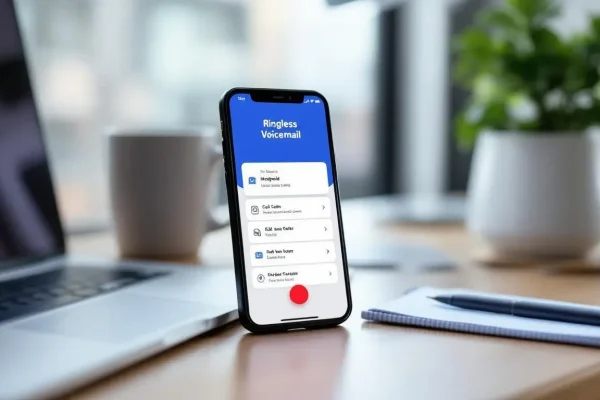
March 5, 2025
Best Ringless Voicemail Apps for Your Business
Explore top ringless voicemail apps to boost business communication and efficiency. Discover features, benefits, and how they can fit your needs.

August 4, 2025
Why do calls go straight to voicemail
Discover why calls go straight to voicemail and explore solutions to improve connectivity. Learn practical tips to ensure your calls are received.
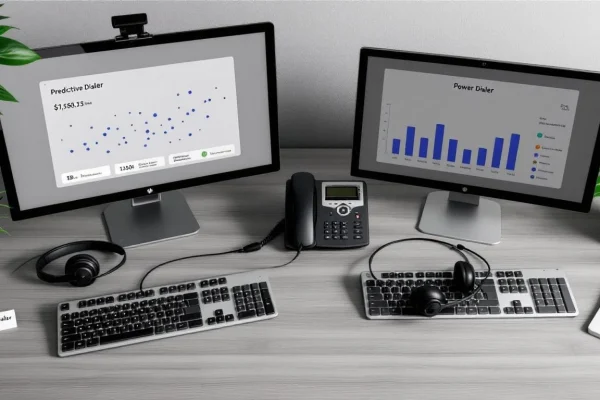
July 20, 2025
Predictive Dialer vs Power Dialer: Which to Choose?
Compare predictive dialer vs power dialer, learn their differences, and decide on the best tool to optimize your call strategy for efficiency and success.